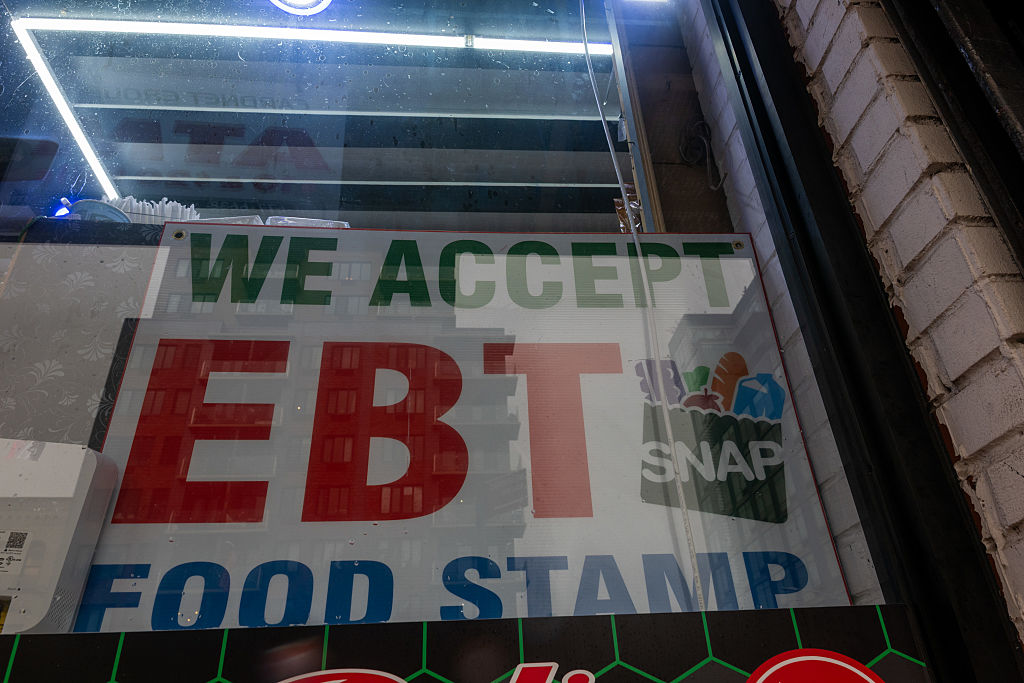Millions of Americans relying on food assistance remain caught in political limbo after the Trump administration told states to pay full Supplemental Nutrition Assistance Program (SNAP) benefits for November, even as it asked the Supreme Court to block the order requiring those payments.

The HuffPost reports that the U.S. Department of Agriculture (USDA) issued a memo on Friday saying it was “working towards implementing November 2025 full benefit issuances” in response to a federal court order. But just hours later, the Justice Department asked the Supreme Court to intervene and stop those funds from going out.
Justice Ketanji Brown Jackson granted an emergency stay, temporarily blocking full benefit distributions until a lower appeals court rules on the case.
The Legal Tug of War Over Food Aid
According to HuffPost, the Supreme Court’s involvement marks the latest twist in a “crazy back and forth” over food benefits during what has become the longest government shutdown in U.S. history.
At the center of the fight is whether the administration can withhold food aid because of the lapse in congressional appropriations. The USDA initially said it could not pay November’s benefits because the shutdown cut off funding. But after Democrats and nonprofit organizations sued, a judge ordered the agency to use a $4.6 billion contingency fund to issue at least partial payments.
On Thursday, U.S. District Judge John J. McConnell Jr. went further, ordering full payments by tapping additional funds. The Trump administration appealed immediately, calling the injunction “unprecedented.” In HuffPost, Solicitor General D. John Sauer told the Supreme Court the ruling “makes a mockery of the separation of powers.”
Trump’s Mixed Messaging
President Donald Trump has fueled confusion with contradictory statements about SNAP funding.
HuffPost states that Trump said there would be “no SNAP benefits until Democrats agree to reopen the government,” only for White House press secretary Karoline Leavitt to later claim “he didn’t mean it.”
Despite publicly insisting he would ensure Americans get their food assistance, the administration’s court filings argue the opposite, urging judges to block orders that would force the government to pay the full amount.
According to the administration, paying out the benefits now would drain funds that cannot be recovered.
“Once those billions are out the door, there is no ready mechanism for the government to recover those funds,” Sauer said in a filing, accusing some states of trying to “seize what they could of the agency’s finite set of remaining funds.”
States Scramble to Feed Families
Before the Supreme Court stepped in, several states rushed to process payments.
HuffPost reports that Wisconsin issued $104 million in benefits at midnight to 337,000 households. In Oregon, Gov. Tina Kotek said state employees “worked through the night” to ensure families relying on SNAP “could buy groceries.” Hawaii, California, New Jersey, Pennsylvania, and Washington also moved quickly, while Delaware used state funds to issue a temporary relief payment.
Still, many states were left waiting for federal guidance after the Supreme Court stay halted further distributions.
Millions Left in Limbo
The food program serves about one in eight Americans, providing monthly benefits through electronic benefit transfer (EBT) cards. With the stay in place, families are facing fresh uncertainty about when they will receive help.
HuffPost reports Deb Phillips, a 66-year-old retiree from Arizona, said she missed her $423 benefit this month.
“If it hadn’t been that I have held some money in reserve, knowing that this was coming up, I would not have food in the house right now,” she told the outlet.
Jasmen Youngbey, a single mother in Newark, NJ said her balance was $0 as she waited in line at a food pantry.
“Not everybody has cash to pull out and say, ‘OK, I’m going to go and get this,’ especially with the cost of food right now,” she said.
The Bottom Line
The administration’s mixed approach, telling states to pay while petitioning the Supreme Court to stop payments, reflects an ongoing disconnect between political messaging and policy execution.
As the appeals process continues, 42 million Americans, including millions of children, remain uncertain about when they will be able to afford their next meal. For now, the government’s promises of “funding SNAP” are just that, promises, while food insecurity continues to grow under Washington’s watch.


